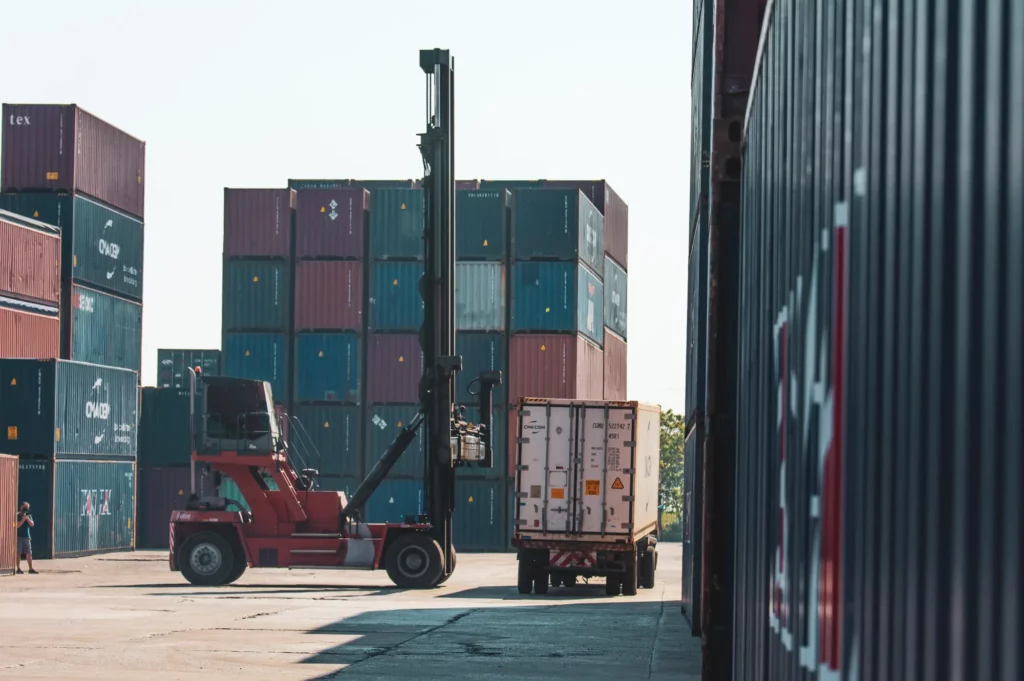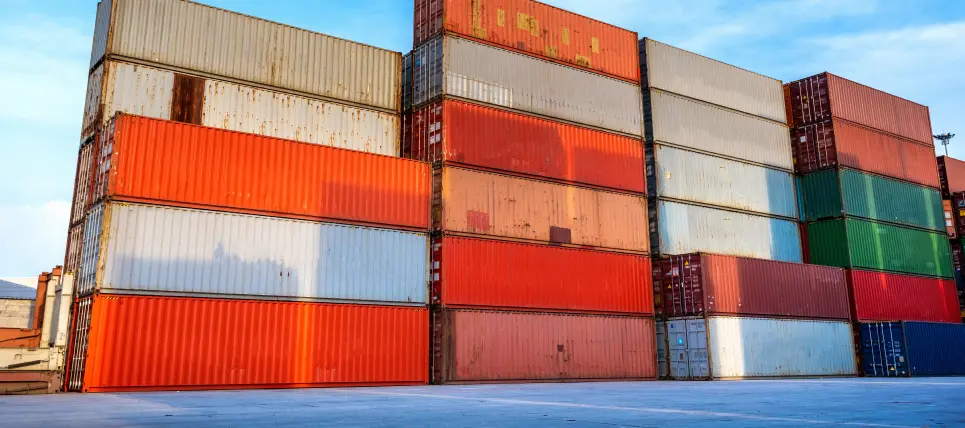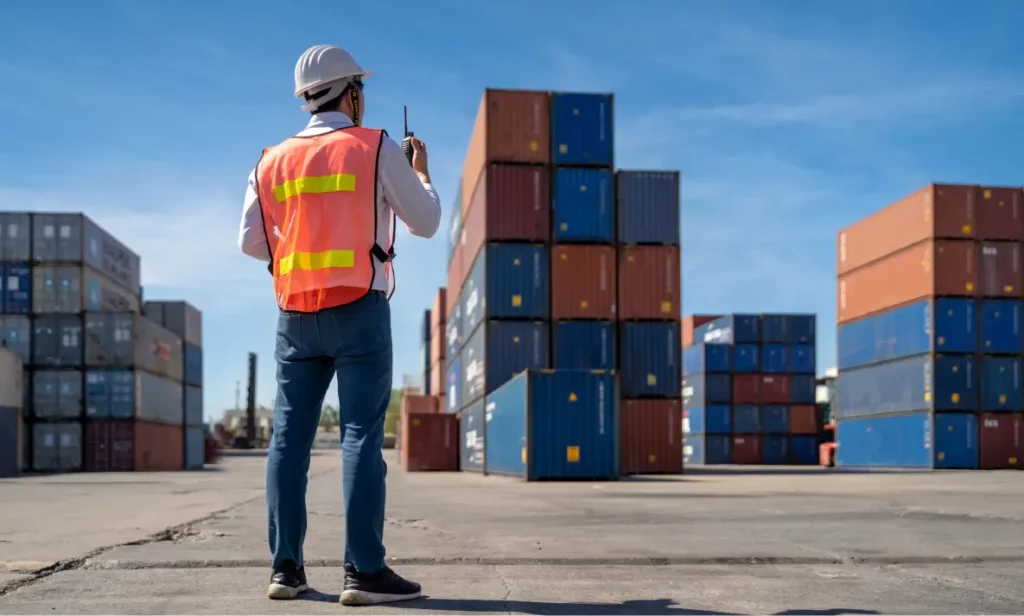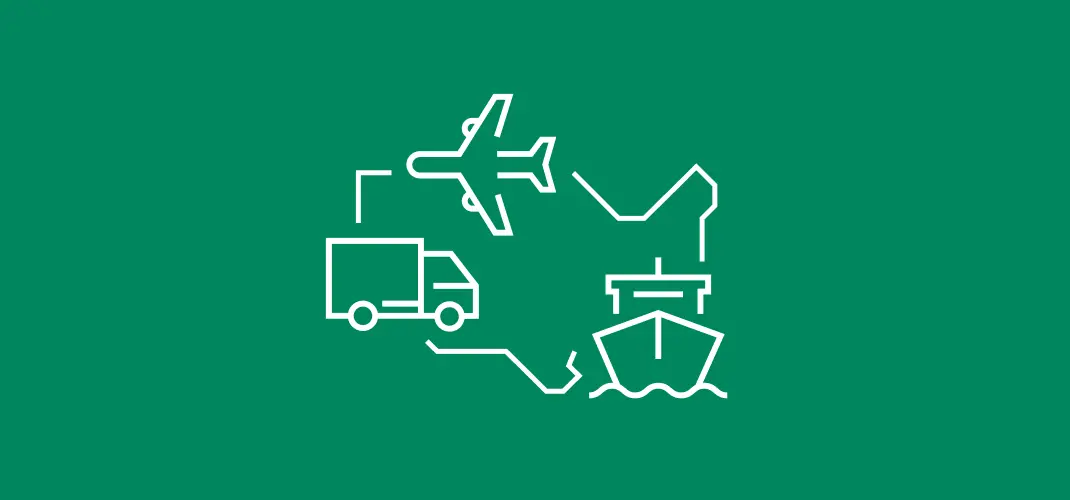A chain is as strong as its weakest link. When it comes to international logistics, this can be paraphrased as a logistics chain is as strong as its shortest link. The latter is drayage service – a crucial component of the international logistics process, which involves transporting goods over a short distance, typically from a port to a warehouse. Despite its relatively limited scope, the impact of drayage on the import process is significant. Efficient drayage operations can be the difference between a seamless logistics flow and one fraught with delays and complications.
Drayage services are an integral part of achieving operational efficiency for international shippers. Effective drayage management can streamline their logistics operations, ensuring a smoother transition of goods into the United States. While seemingly minor in the grand scheme of global shipping, this initial step holds immense importance in setting the tone for the entire logistics process.
The ABC of Drayage

Drayage in logistics is a specific service of transporting goods over short distances, typically within the same metropolitan area. This is most commonly seen in cargo movement from ports to nearby warehouses or terminals. The term itself originates from a horse-drawn vehicle known as a dray, used for similar purposes in the past. Today, drayage is a critical step in the supply chain, ensuring that goods transition smoothly from large-scale transportation methods, such as ocean freight or rail, to more localized delivery services.
Typical drayage services include moving containers from a ship to a port’s warehouse, from the port to a rail terminal, or directly to the buyer’s designated storage facility. The process involves several steps, including the initial pickup of the container, transportation to the intended destination, and the unloading of goods. Shippers typically rely on drayage providers for their expertise in handling cargo efficiently, ensuring that all regulatory compliance and documentation requirements are met.
Integrating effective drayage services into logistics operations can minimize delays and optimize supply chains. This is particularly relevant for shipments entering the United States, where efficient drayage can significantly influence the timely availability of goods in the market. As such, drayage acts as a bridge, connecting the dots in the supply chain to ensure a fluid transition from international transport to local distribution.
Drayage Challenges

Despite being short in time, drayage operations can be complicated by various challenges, running the gamut from congestion at ports, varying regulations, and the coordination of last-mile delivery. If not appropriately addressed, each of these issues can lead to delays, increased costs, and reduced efficiency in the supply chain.
Port Congestion:
Congestion often occurs due to the high volume of cargo being processed, limited storage space, and sometimes labor shortages. Delays can ripple through the supply chain, affecting delivery schedules and leading to increased storage fees. To mitigate these effects, shippers can work closely with drayage providers who deeply understand local port operations and can handle peak times more effectively. Employing technology for better scheduling and coordination can also help minimize wait times and optimize container movement.
Regulatory Compliance:
Compliance with local, state, and federal regulations is critical to avoid fines and delays. This includes understanding customs procedures, cargo security measures, and environmental regulations, which are often quite complicated for newcomers. Shippers can overcome these challenges by partnering with experienced drayage providers who are well-versed in the regulatory requirements and can ensure compliance at every step of the process.
Last-Mile Coordination:
Poor drayage services can ruin your last-mile delivery services. Traffic congestion and bad scheduling for receiving docks can all impact the efficiency of last-mile delivery. To prevent such a turn of events, you’d utilize advanced route planning software to find the most efficient paths and schedule deliveries during off-peak hours to avoid heavy traffic. Building strong relationships with warehouse operators can also ensure smoother operations and quicker offloading of cargo.
Combining the expertise of skilled drayage providers with advanced technology for planning and coordination is a winning plan to maintain the high efficiency of your logistics operations and ensure that goods move seamlessly from ports to their final destinations.
Fining Logistics Chains with Efficient Drayage Services

International shippers looking to simplify their entry into the United States should optimize their drayage services. Efficient drayage can significantly enhance logistics chains, reducing delays and costs while improving overall supply chain reliability. Below are practical recommendations to achieve this goal:
1. Partner with Experienced Drayage Providers: It is crucial to choose a drayage provider with extensive experience and a deep understanding of the U.S. logistics environment. Look for providers with a proven track record of handling international shipments smoothly. These companies will have the knowledge and resources to deal with port operations, regulatory compliance, and any unforeseen challenges that may arise.
2. Employ Technology for Better Coordination: Technology plays a significant role in streamlining drayage operations. Advanced logistics software offers real-time tracking, route optimization, and scheduling capabilities. This can help plan the most efficient routes, avoid congested areas, and ensure timely deliveries. Besides, technology can facilitate better communication between all parties involved, from the drayage providers to the warehouse managers.
3. Understand and Comply with Regulations: Compliance with all relevant regulations is non-negotiable. Shippers should ensure that their drayage providers fully comply with U.S. customs regulations, environmental standards, and any other applicable laws. This helps avoid legal issues and ensures that shipments are processed quickly upon arrival.
4. Plan for Peak Times: Be aware of peak periods at U.S. ports and plan shipments accordingly. During these times, ports can become extremely congested, leading to delays. Working with your drayage provider to schedule shipments during off-peak periods can help avoid these bottlenecks.
5. Foster Strong Relationships with Port Authorities and Warehouses: Building solid relationships with key stakeholders, such as port authorities and warehouse operators, can be beneficial. These relationships can help gain insights into port operations, expedite the offloading process, and ensure that your goods are prioritized for inspection and release.
6. Opt for Consolidation Services When Possible: Consolidation services can reduce drayage costs and improve efficiency. By consolidating shipments with those of other importers, you can take advantage of lower rates and reduced handling times. This is particularly effective for smaller shipments that may not require a full container load.
7. Continuous Improvement and Feedback Loop: Establish a continuous feedback loop with your drayage providers to identify areas for improvement. Regularly review performance metrics and work together to implement strategies for enhancing efficiency. This could involve adjusting schedules and routes or even exploring alternative ports of entry to streamline the process.
US Inbound Is Your Logistics Guide
Partnering with a reputable and reliable logistics provider, such as US Inbound, can significantly enhance your logistics operations through efficient drayage services. Such a partnership brings deep knowledge and expertise in drayage and logistics to the table, ensuring that your goods are transported efficiently from ports to their final destinations.
US Inbound specializes in tackling the complexities of the U.S. logistics network, offering tailored drayage solutions that cater to the unique needs of each shipper. Their understanding of the local regulatory environment, coupled with their ability to optimize routes and schedules, minimizes delays and accelerates the delivery process. This expertise is invaluable in avoiding the common pitfalls associated with port congestion and regulatory compliance, two of the most significant hurdles in the logistics chain.
US Inbound’s real-time tracking and advanced logistics planning tools give shippers visibility and control over their shipments, allowing for proactive adjustments and decision-making. They also employ its extensive network and relationships with port authorities, customs officials, and warehouse operators. These relationships facilitate smoother operations, quicker customs clearance, and more efficient handling and storage of goods. For international shippers, this means reduced waiting times, lower storage costs, and, ultimately, faster time-to-market for their products.
Main Points:
Although drayage is a seemingly small part of the logistics chain, it plays a significant role in ensuring the smooth transition of goods from ports to their final destinations. Challenges such as port congestion, regulatory compliance, and last-mile coordination can significantly impact the efficiency of logistics operations. However, strategic planning, leveraging technology, and partnering with experienced providers can overcome them.
It is also a good idea to consider a partnership with a reputed logistics provider like US Inbound, offering expertise and a comprehensive suite of services designed to tackle the complexities of the U.S. logistics environment. Their excellent knowledge of drayage operations, combined with advanced technological tools and a robust network, ensures that shipments are handled efficiently, compliantly, and without unnecessary delays.



